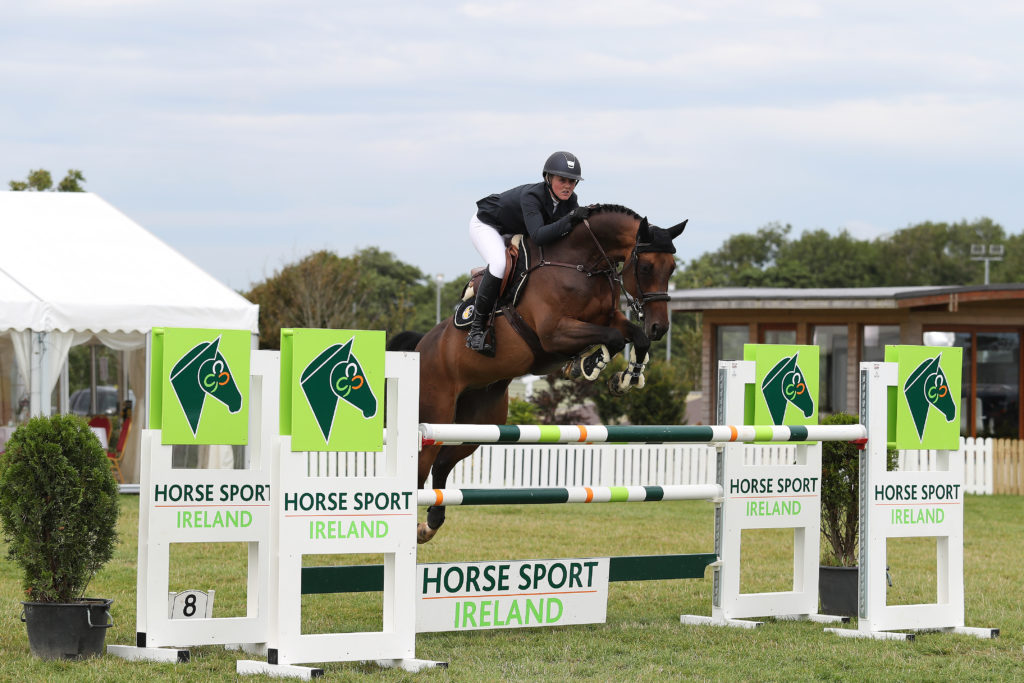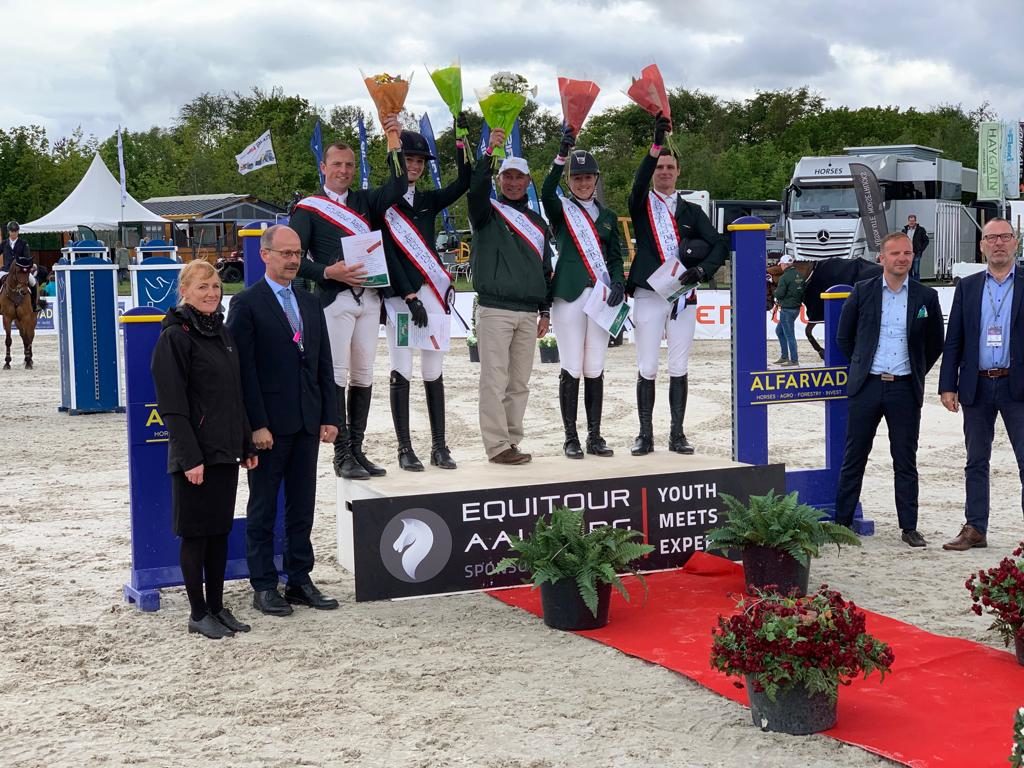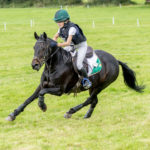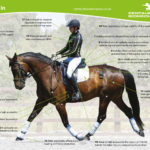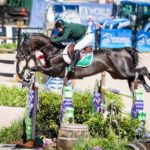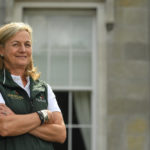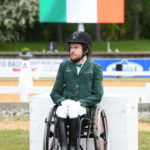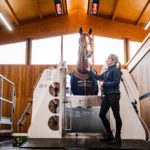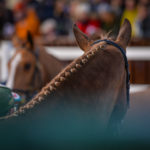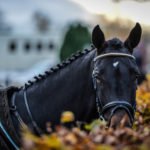10 Questions with Barry O’Connor and Jenny Rankin
- 23 February 2021, 15:55
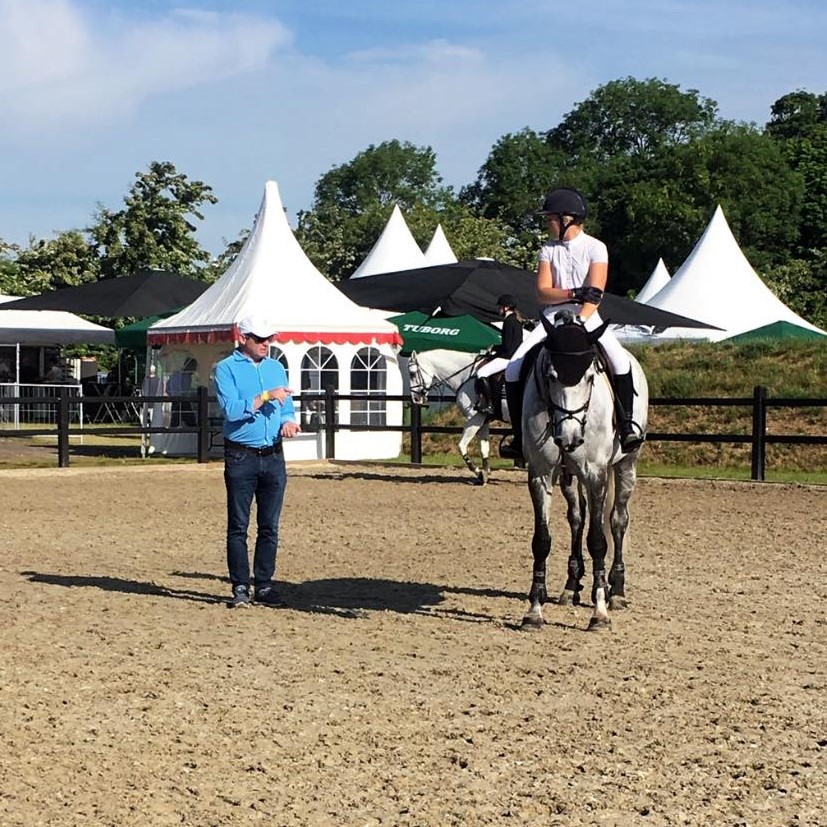
International Sport horse Agent and Coach, Barry O’Connor and Jenny Rankin, Irish International showjumper and Graduate of the FEI Rolex Young Rider Programme
Welcome to part three of our Young Horse Training Series. This week we get a unique insight into the training and production of young show jumpers as we team up with International Sport horse Agent and Coach, Barry O’Connor and Jenny Rankin, Irish International showjumper and Graduate of the FEI Rolex Young Rider Programme.
Q1 Can you give an overview of your business model?
Barry O’Connor (BOC): We are based in Malahide Co Dublin with a capacity for 20 horses. We keep reinvesting in our facilities in order to meet the needs of the modern market. This caters for the training of riders and the production and trading of horses internationally. We travel globally to source both horses and create new business relationships.
Jenny Rankin (JR): We are catering for all age groups of horses that have the quality for top sport. Some horses will be suitable for professional riders and some suitable for the amateur market. My job as a rider is to work together with Barry to assess each horse individually and decide where in the market and sport the horses are best suited. Our thoughts on each horse can change over a period of time as they progress.
Q2 How do you assess a young horse’s suitability for high level showjumping?
BOC: If the horse is too young to physically assess their jumping ability (foal to two-year-old) I would use the dam’s performance and the performance of the progeny as my strongest guide. If the dam has not produced a high percentage of foals that compete at 1.40M level or above then I would be more cautious of investing in further progeny. Older horses can be assessed from their own qualities, however if the positive or negative attributes of the parents are present it would reinforce my evaluation. For example, negative attributes that could be passed on to young horses are; spooky, lacking blood, poor balance or poor ridablity.
Q3 What advice would you have for people judging whether their horse is ready to be broken?
BOC: Our usual time to break a young horse would be at the end of the horse’s three-year-old year. Some horses are too weak to fully break at three. It is important that the horses are well handled from the ground before you introduce a rider. Handling the young horses can be done at any age. The horses should be physically strong enough to cope with the work load of being broken.
Q4 What would a typical week at home look like for one of your young horses?
JR: We are quite lucky with the facilities we have at home in Dublin. We can vary the training of the horses day to day. Both the young horses and the older Grand Prix horses use the aqua treadmill throughout the week, working at different intensities tailored to each horse.
A sand canter track, grass jumping field and an indoor arena means I can ride the horses in a different environment daily. This keeps variety throughout the week for the horses.
Time in the paddock and days off are also important for the horses for both their mentality and to give their body time to recover from work. The weekly work program is different depending on the plan or market for each horse.
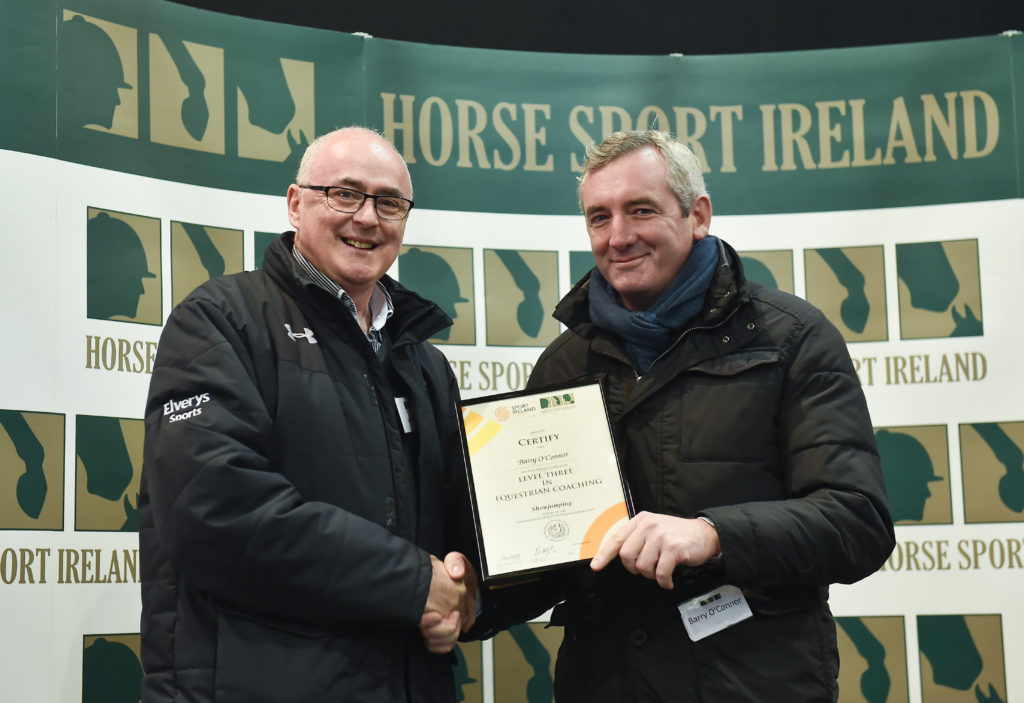
Barry O’Connor (right) is a Horse Sport Ireland Level Three Equestrian Coach (Photo by Seb Daly/Sportsfile)
Q5 What advice would you have for teaching a horse how to do a flying change?
BOC: Horses should have some level of natural balance on both reins in trot and canter before starting to teach flying changes.
There’s no point in starting to teach a flying change to a horse unless it can do that. For the horses to be suitable for our modern-day sport and market they should be capable of a flying change by the age of four or five-years-old. Often, we start to teach the horses this exercise too early and too late, both can cause problems. If the horse does not change naturally we start over a single pole on the ground, asking for the change over the pole using the same aids as you would going from walk to canter: inside leg on the girth, outside leg behind. Your change of outside leg initiates the flying change and keeps your horse straight. The rider needs to have very definite aids.
If they achieve a change once on the left and once on the right rein, I would then not ask for any further changes that particular day. Once the horse understands to change leads – to repeat the exercise over and over again makes them tired and they start to anticipate the instruction.
Q6 Another one of our followers asked: “What exercises would you use to help improve a horse’s jumping technique?”
BOC: For young horses I always use ground lines in front of the jumps, this encourages the horse not to canter too close to the jump and in theory helps to improve the timing and technique of the jump.
For horses that rush over the fences I would recommend placing a square pole 3.5 meters behind a vertical or 6.5 meters behind an oxer – this gives the horse a guideline of where to land meaning they must take more time on the jump and maintain better balance behind the jump.
All horses tend to drift left or right before and after the jump, especially young horses they find it more difficult to stay straight. To help correct this I would always put tram lines down just to give the horse guidelines as to where exactly they are being asked to go.
Keep the jumps very small, everyone wants to put up the fence but really 80cm to 1m that’s the highest our young horses would jump at home. Maybe once or twice during the year we would school them over slightly higher fences but that’s it.
Q7 How would you assess whether a young horse is ready to take part in some of the young horse competitions?
JR: Some horses are very advanced for their age and others develop late, this can be due to their mentality as a young horse or their physical strength. So at this point as a rider you have to have feeling for the horses. To over work them for their age can be just as harmful as under working them.
Start at small local shows close to home and only progress further when the horse shows that it has coped well and gained a good experience. Competing in the class specifically for the age of your horse is an accurate way of assessing whether you are up to speed with the horses of the same age category.
Q8 If you were to find yourself in a situation where you or your horse has lost confidence, what would you do?
JR: To take a step back temporarily is often a step forward in the long run. To jump in a category below a horse’s age group for me isn’t a problem. I have ridden successful Grand Prix horses that have not won classes as a young horse. It is more important to jump in the class that is best suited to the horse that particular day.
If you as a rider are struggling with something it is always beneficial to ask a professional coach for advice.
Q9. The standard of showjumping in Ireland is very high. What advice would you have for small breeders, producers and amateurs who want to be involved in the sport or in breeding?
The only physical barrier I see in horse sport is the jumps.
BOC: Our sport and industry is competitive, but I think that’s a good thing in a way because it sets a high standard. What we have now in Ireland is more successful breeders and riders than lucky breeders and riders and it is fantastic. Actually, it is quite exciting.
I don’t think it matters if you have a load of money, no money, one stable, twenty stables, an arena or a grass paddock. You can still produce your young horse as good as anyone, you can still strive to have a well-produced horse. It’s a matter of applying yourself. It is competitive but sometimes competition is a very healthy thing. It’s setting a good standard across the country. The only physical barrier I see in horse sport is the jumps.
Q10. How would you describe the market for Irish-bred horses?
BOC: Ireland can consider itself extremely lucky. There’s a very healthy market for Irish-bred horses. I think 70 Irish-bred sport horses left Ireland for America in the month of December. What other businesses move along like that considering all the challenges businesses are facing at the moment?
I think the export numbers are as big as they were the year before. There’s a huge amount of horses going to England, Scandinavia, America etc. I think the prices of lower-level horses have increased as well, for well-produced lower-level horses.
So, for producers maybe with smaller budgets that’s where they can really excel if they look after their costs. If you have a horse who is riding well, you will sell them very easy. There’s huge demand.
-
Popular

-
Latest









